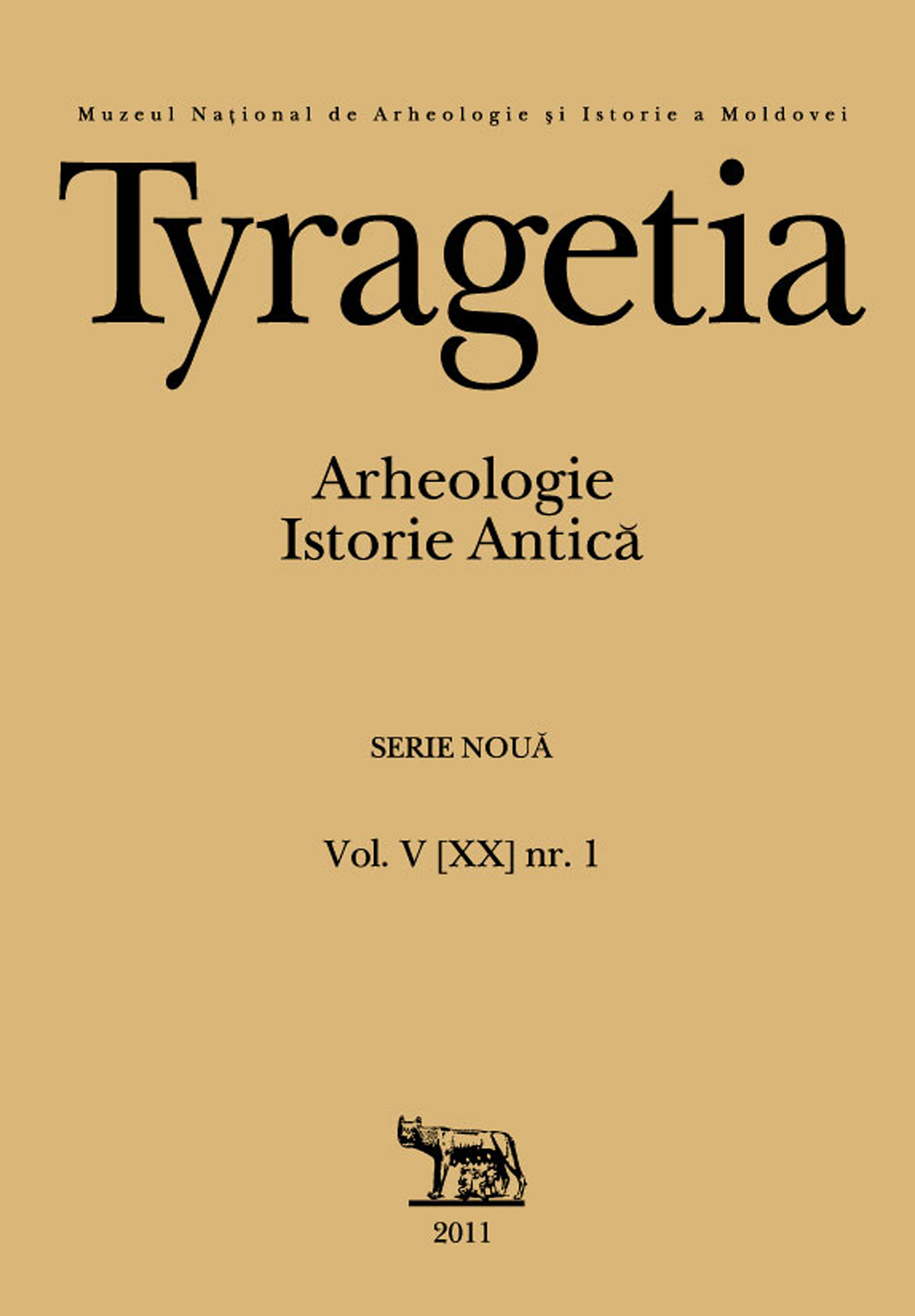К вопросу о гибели Екимауцкого городища
To the Question about the Loss of the Hill-fort Ekimauci
Author(s): Igor ProhnenkoSubject(s): Archaeology
Published by: Muzeul Naţional de Istorie a Moldovei
Keywords: Echimauti fortification; Arabic dirhams; Pechenegs
Summary/Abstract: This hill-fort is one of the most researched among the medieval monuments of the country between the Prut and Dniester. Contradictions in identification of the date of it destruction (second half of the 10th or the first half of the 11th century) make us to examine chronologic indicators of the monument.The numismatic collection represented by 17 Arabic silver dirhams gives the most exact information. It allows us to attribute the capture and destruction of the monument to the second half of the 10th century, and most likely to the third quarter of this century.Earrings with pendant in the form of bunch of grapes can be used as one more category of objects which indicate the time of destruction of the monument. They were found out in closed complexes of the hill-fort together with later samples of dirhams.Cartography of the finds of Echimauti type testifies about their particular concentration in the basin of the river of Tisza. In contrast to samples which were found outside the Carpathian basin, famous as a rule by materials of hoards, practically all earrings of Echimauti type inside the Carpathian arc are connected with nomadic burials. Pieces of weapon similar to those from the nomadic necropolises were found in Echimauti. Together with other evidences in the field of material culture, it allows us to suppose that nomads took part in destruction of the hill-fort while moving from the Northern Black Sea region into the Carpathian lowlands.Historic situation and the exact chronology of the Pechenegs’ movement from the Black sea to the Upper Tisza region, during which the hill-fort of Echimauti was ruined, together with chronologic indicators of the monument, allows us to date its destruction not later than the third quarter of the 10th century.
Journal: Tyragetia (Serie Nouă)
- Issue Year: V/2011
- Issue No: 1
- Page Range: 291-299
- Page Count: 9
- Language: Russian

